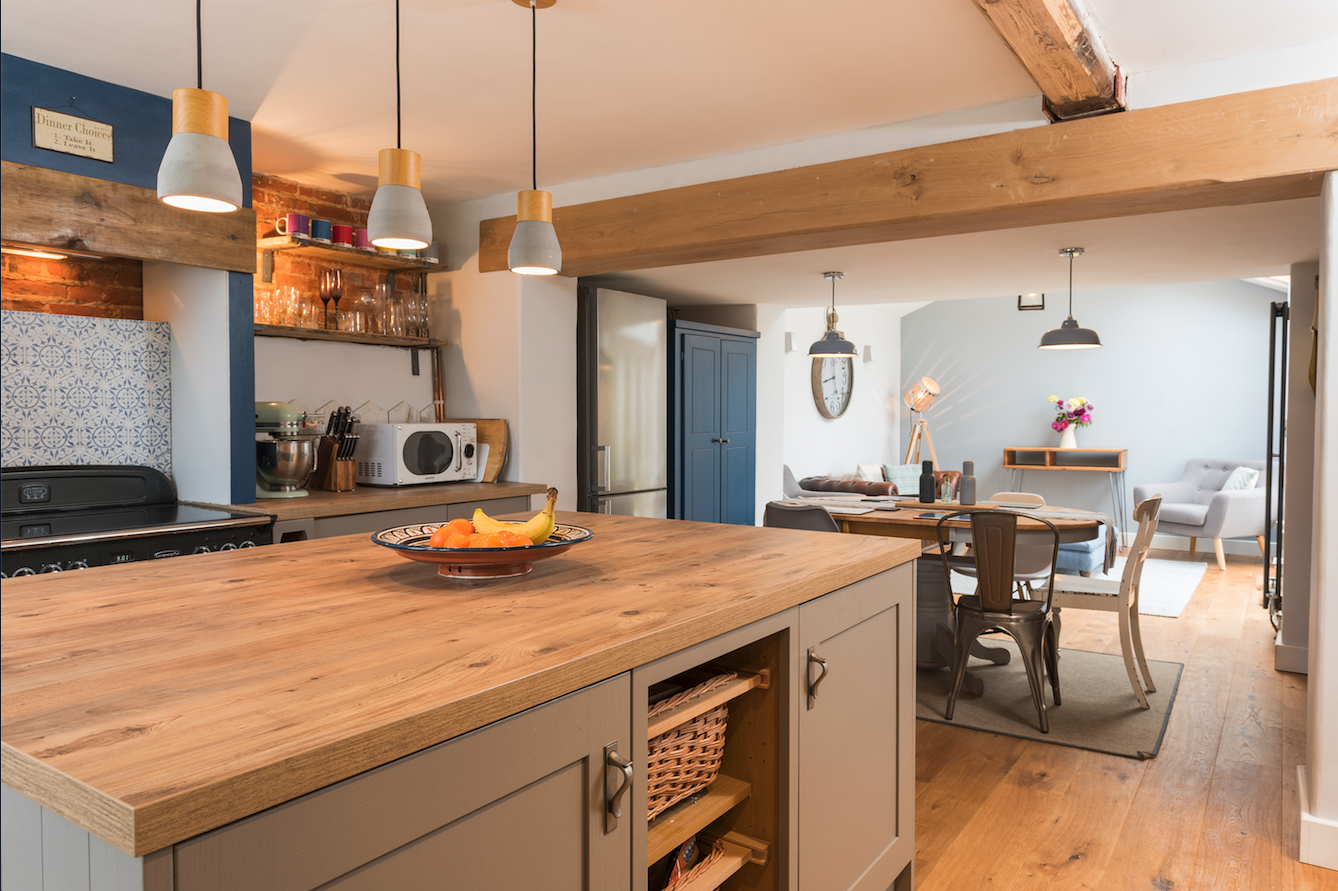Since 2014 barn conversions have benefitted from permitted development rights, meaning a full planning application is not required. For many, this has made barn conversions an attractive alternative to a new build.
The main advantage here is speed and simplicity of gaining permission. There are other reasons that you might decide to opt for barn conversion.
- The existing structure and footprint of a barn lends itself to open-plan living and offers flexibility in room planning.
- The architectural aesthetic of a farm building is inherently sympathetic in a rural location.
- It’s sustainable and can be cost effective to re-use existing materials and foundations as much as possible.
- A barn conversion will reduce the need for new development in countryside, while increasing rural housing stock.
- They usually come with beautiful grounds, views and scenery.
Image above by Rebecca, who specialises in rural architecture on Design for Me. See her full profile and shortlist her for your barn conversion.
New legislation for barn conversions (2022)
This month (June 2022), the PM announced the intention to ease restrictions for barn conversions further as part of a strategy to ‘level up’ the UK housing market. Johnson said he wanted to ‘sensitively make use of existing planning rights‘ to ‘make it easier to turn disused agricultural buildings into homes for local first-time buyers, and to support farmers in growing and diversifying their businesses’. He also wants to ‘put more publicly owned brownfield land to use and seek to unlock small sites, with priority for first-time buyers and key workers’.
Tom Stanley, from developers Knight Frank, has speculated that this could mean removal of the maximum square metre threshold or even the land restriction (relating to National Parks, AONB, conservation areas etc).
Does your barn qualify for permitted development?
The full and official details of class Q (formerly class MB), for the permitted development of barns into dwellings, can be found here.
In most cases an agricultural barn will benefit from permitted development rights to convert it into a house without planning permission. However, there are some exceptions.
- The barn must have been in agricultural use on or before 20th March 2013 or for at least ten years before you apply to convert it.
- It isn’t listed, in an AONB, National Park or conservation area.
- The proposal contains no more than:
- (up to) three ‘larger’ homes within a maximum of 465 square meters or
- (up to) five ‘smaller’ homes where each is no larger than 100 square metres or
- a mixture of up to five ‘larger’ and ‘smaller’ homes where no more than three are ‘larger homes’.
- The development remains within the existing envelope of the barn.
- Building work and demolition should be limited to the minimum necessary for the building to function as a house. The existing structure must be sound enough for conversion, without needing extensive rebuilding.
There are also limitations if the site is under an agricultural tenancy. This list is not exhaustive and subject to amendments and you should always check current guidance prior to an application or development.
Prior approval for a barn conversion
In addition to the limitations set out above, the conditions of permitted development (Class Q) for barn conversions also state that:
‘before beginning the development, the developer must apply to the local planning authority for a determination as to whether the prior approval of the authority will be required…’ –gov.uk
Prior approval may be required to assess the impact of the development on the following:
- transport and highways
- noise
- contamination
- flood risks
- whether the location or siting of the building makes it otherwise impractical or undesirable to change to residential
- the design / external appearance
- the provision of natural light.
Since August 2020, there have been stricter rules around natural light in habitable rooms and also minimum space standards for new homes (2021). Therefore, you will need to supply floor plans showing labelled rooms and dimensions with your prior approval application.
How long does a Barn conversion prior approval application take?
The local planning authority should usually issue their verdict within eight weeks from submission of your Prior Approval application.
The barn conversion under permitted development (Class Q) must be completed within three years of the prior approval date.
Permitted development or full planning permission for a barn conversion?
As with most permitted development, the criteria can be highly prescriptive and inflexible. It often takes a very well designed and executed application to demonstrate that your proposal meets the criteria.
If your proposal does not fit the permitted development criteria, you would need to submit a full planning permission. In either situation, it’s paramount to have the right professionals to find the best design solution and meet the planning requirements.

